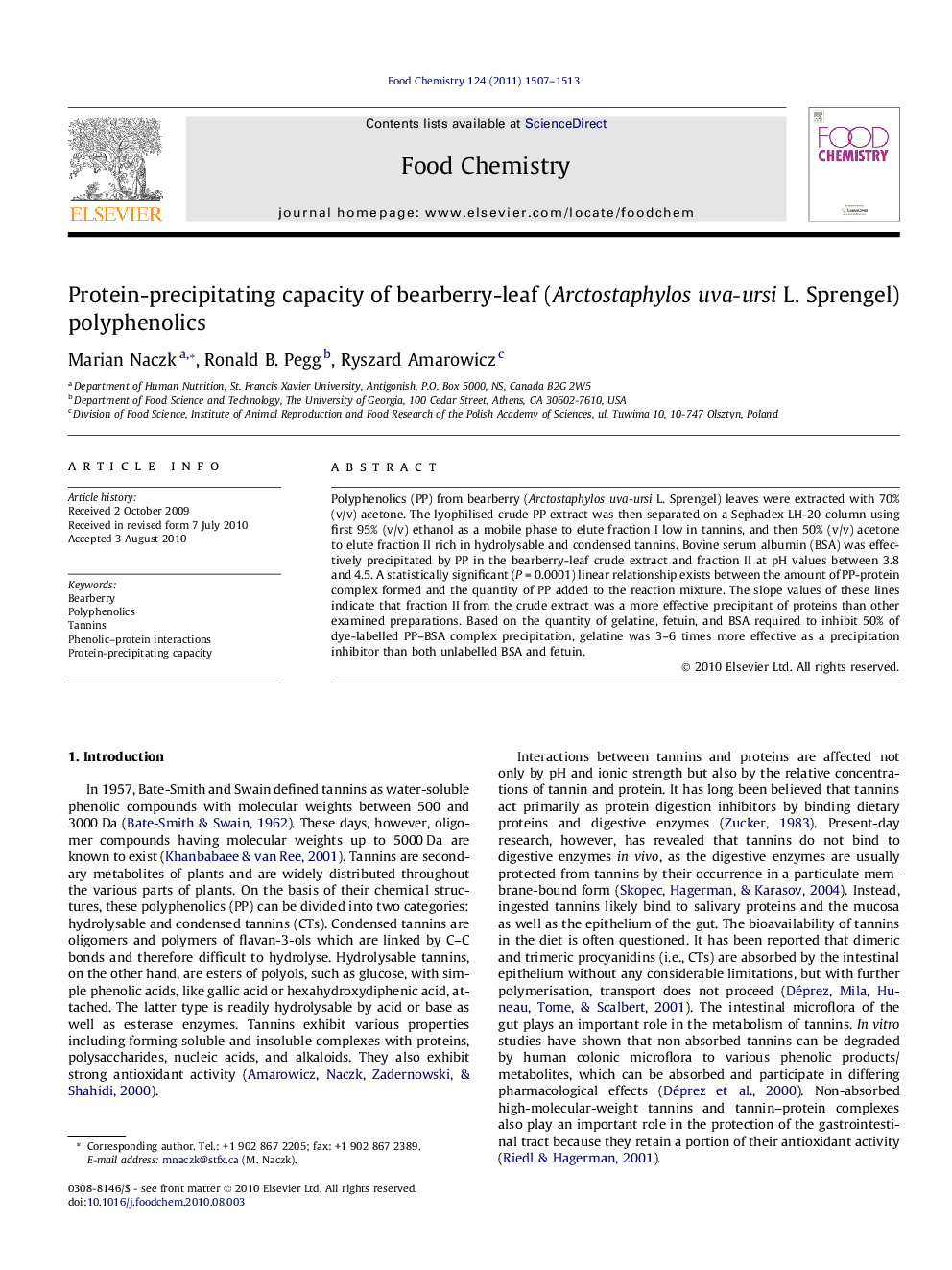| Article ID | Journal | Published Year | Pages | File Type |
|---|---|---|---|---|
| 1189912 | Food Chemistry | 2011 | 7 Pages |
Polyphenolics (PP) from bearberry (Arctostaphylos uva-ursi L. Sprengel) leaves were extracted with 70% (v/v) acetone. The lyophilised crude PP extract was then separated on a Sephadex LH-20 column using first 95% (v/v) ethanol as a mobile phase to elute fraction I low in tannins, and then 50% (v/v) acetone to elute fraction II rich in hydrolysable and condensed tannins. Bovine serum albumin (BSA) was effectively precipitated by PP in the bearberry-leaf crude extract and fraction II at pH values between 3.8 and 4.5. A statistically significant (P = 0.0001) linear relationship exists between the amount of PP-protein complex formed and the quantity of PP added to the reaction mixture. The slope values of these lines indicate that fraction II from the crude extract was a more effective precipitant of proteins than other examined preparations. Based on the quantity of gelatine, fetuin, and BSA required to inhibit 50% of dye-labelled PP–BSA complex precipitation, gelatine was 3–6 times more effective as a precipitation inhibitor than both unlabelled BSA and fetuin.
